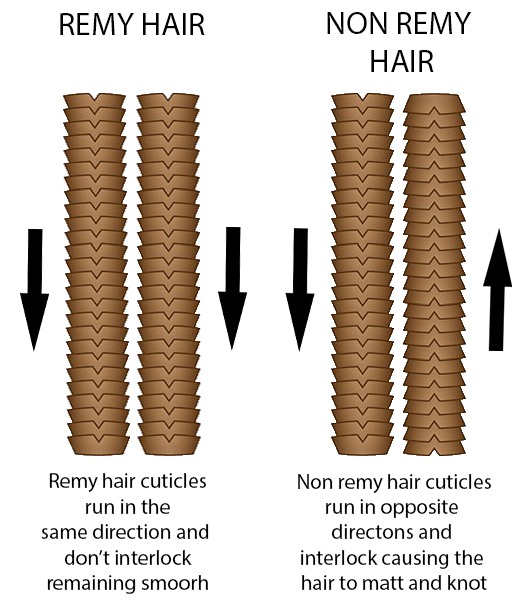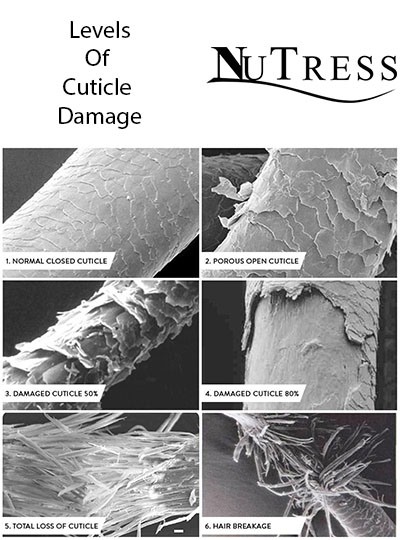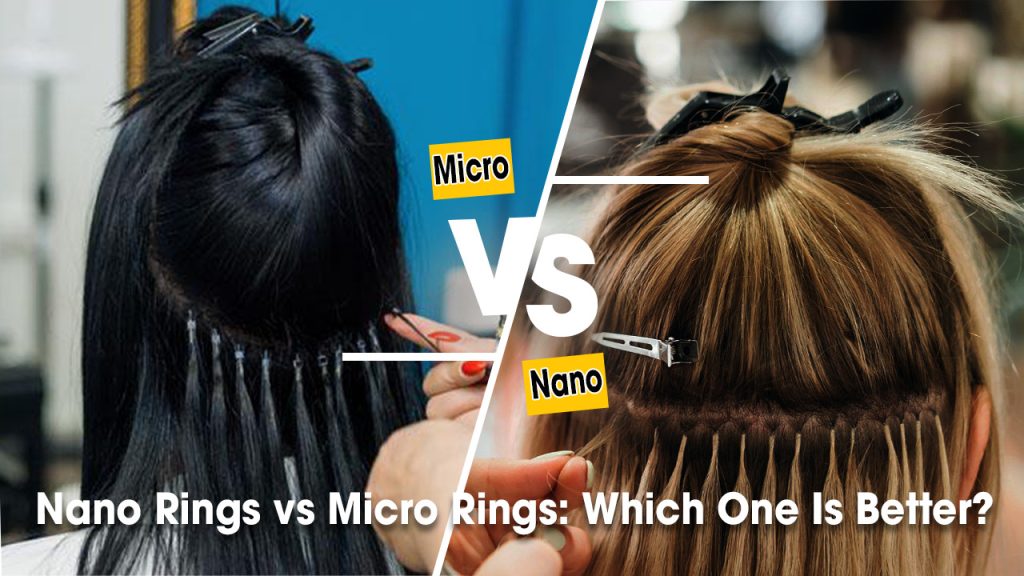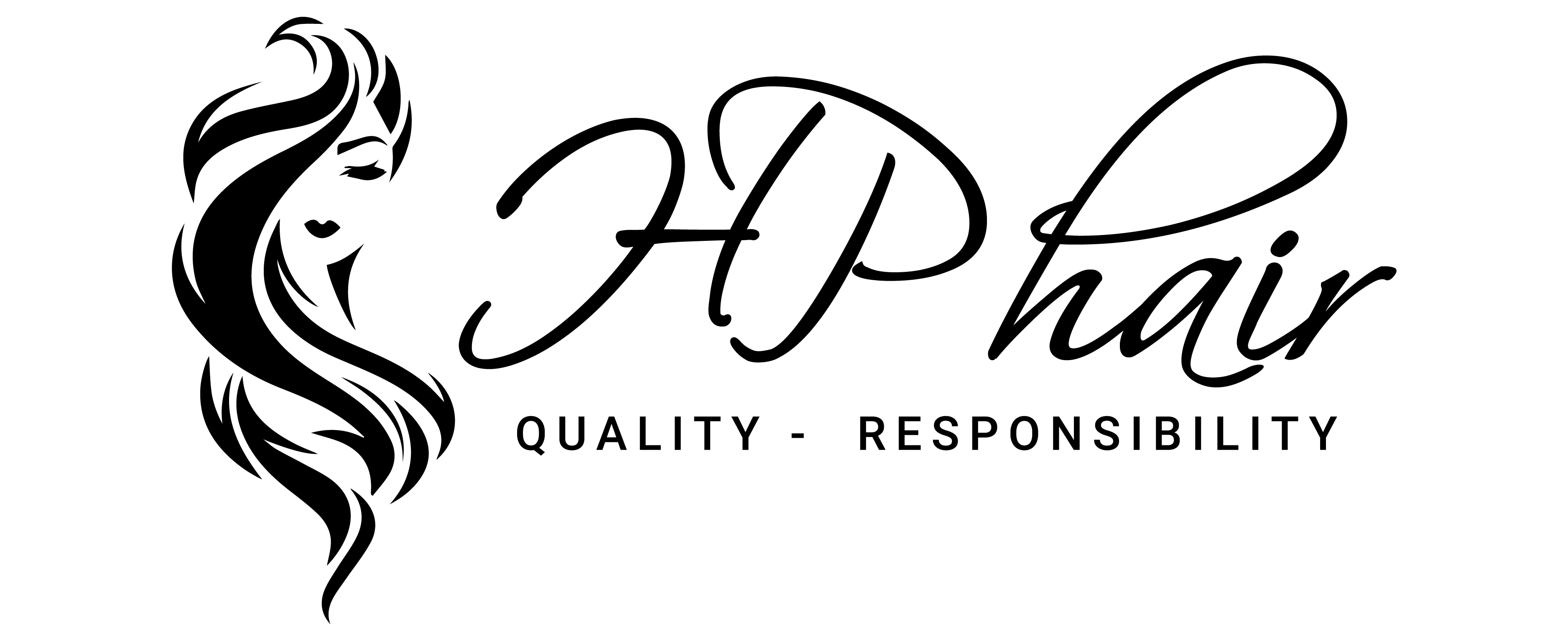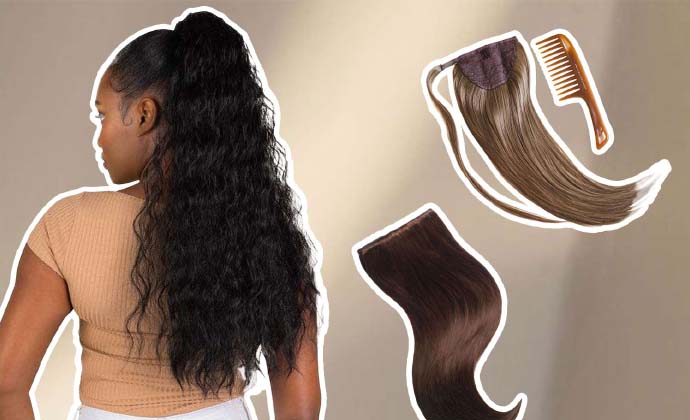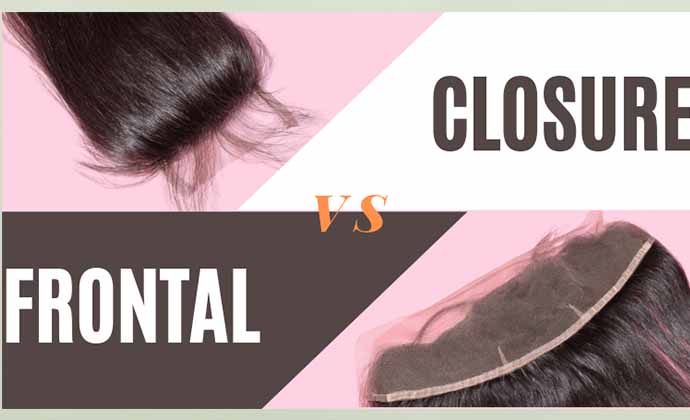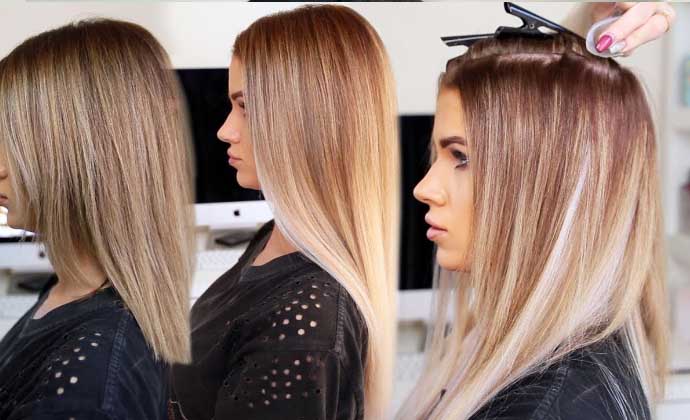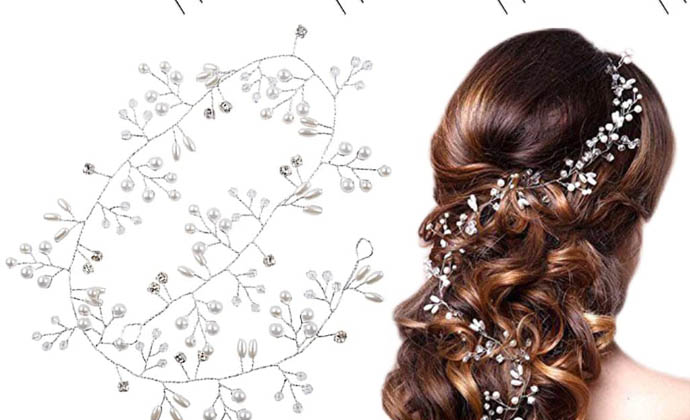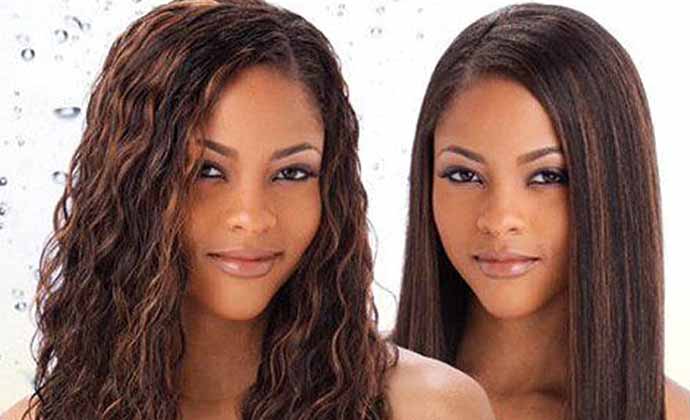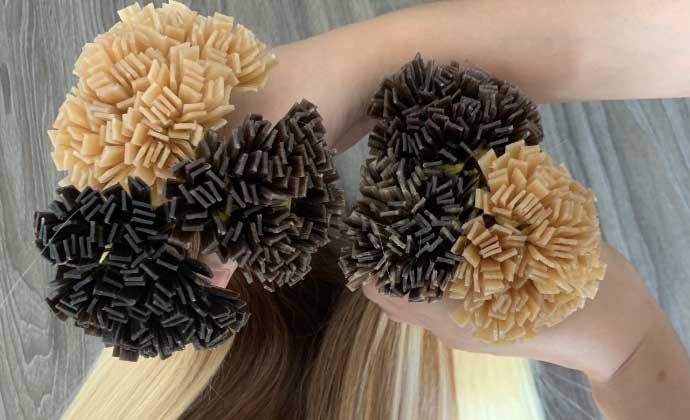Euro, European grade, European style remy hair extensions have a foot in both camps. It’s Asian hair that has MOST of the cuticle removed. But why would you remove only some of the cuticle? Won’t it still tangle if it gets mixed up? Yes, it will but this hair doesn’t have the cuticle stripped because it isn’t remy, it is remy.
There are two reasons for removing only some of the cuticle layers. Firstly, it makes the hair easier to process using gentler methods. The result? Less damaged hair. The second reason is the hair becomes finer, more like European hair. This means it’s more saleable, and can be sold for a better price. Silicone coats the hair, making it shiny and soft. But, soon enough the silicone washes away. The hair becomes duller and after a few short months, it will start drying out, breaking and be prone to split ends. You can reapply hair as many times as you like. But, weren’t you looking for good quality hair?
That said, this hair is great if you’re on a budget, get it for a fair price and know what you’re buying. But this isn’t always the case. Lots of hair vendors and salons hike the price up and market this hair as European. How can you tell if hair is genuine European? Real European hair is scarce and fetches a similar price to Russian hair. If hair is coming out of packets, that all look the same – same length, colour, texture, density – it’s Asian.
Non remy hair extensions are almost exclusively made from ‘standard’ or ‘fallen’ hair. But what is standard/fallen? You’ll be sorry you asked…
You know that you lose hair every day, that hair is constantly going through a cycle of growing, resting, falling out and then growing again? Standard/fallen hair is shed hair collected from brushes, plug holes, drains, etc. Yuk, right? Some women will save their shed hair for years, keeping it in a bag until they have enough to sell. It doesn’t end there though. It’s also collected from rubbish dumps, balled up hair that has been thrown away. The hair is teased apart and sorted according to length. This is the poorest quality hair. It comes from multiple ‘donors’ and contains many textures and colours. And, just in case I need to clarify, it isn’t remy. To make it manageable, manufacturers remove most of the cuticle by soaking the hair in an acid bath. It’s then bleached, coloured, curled/waved/straightened and smothered in silicone.
Because not all the cuticle was removed, when the silicone washes away, the hair will tangle so spectacularly, the only thing it will be good for is the bin. So, why don’t they just have done with it and remove all the cuticle? Because this takes more time, and time is money. As with all things, you get what you pay for when buying hair extensions.
